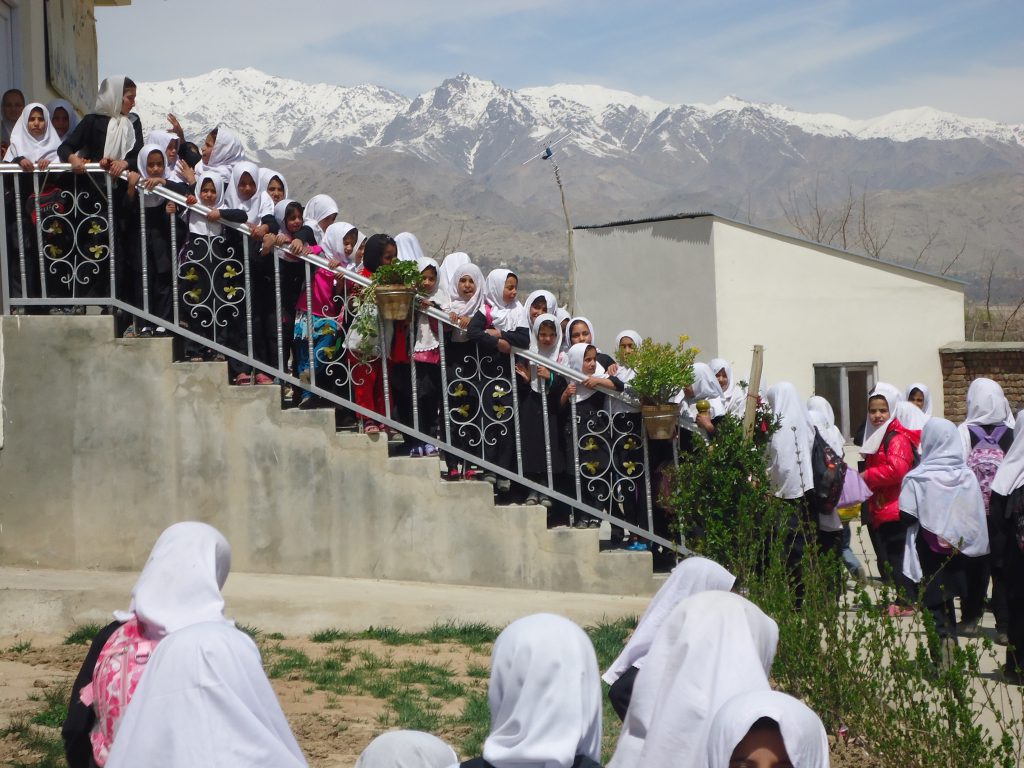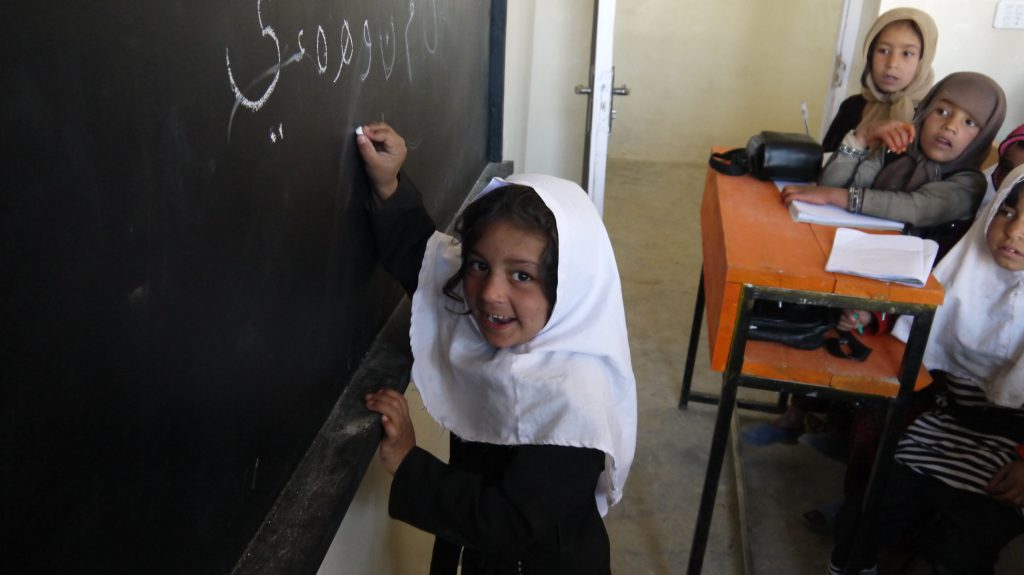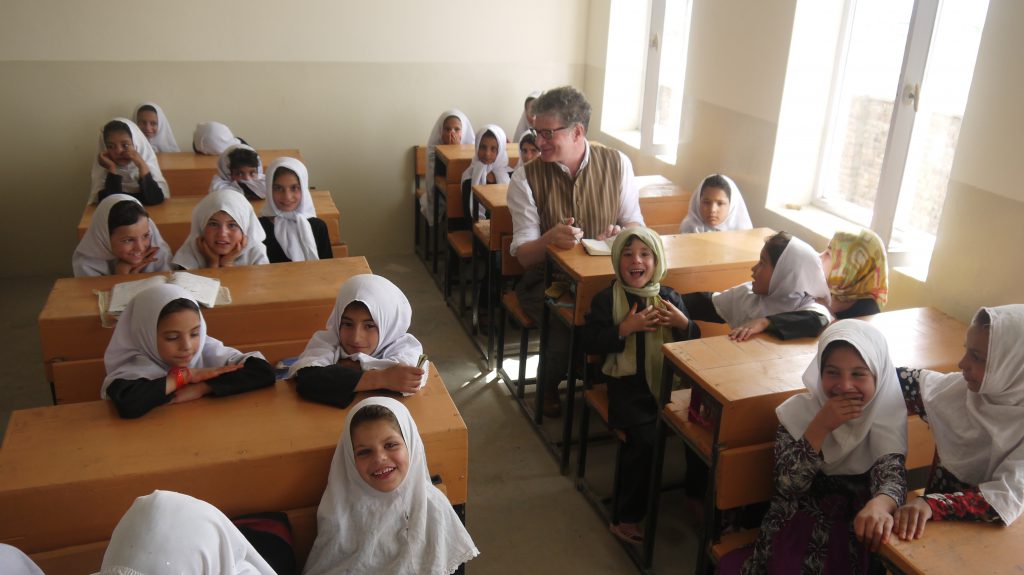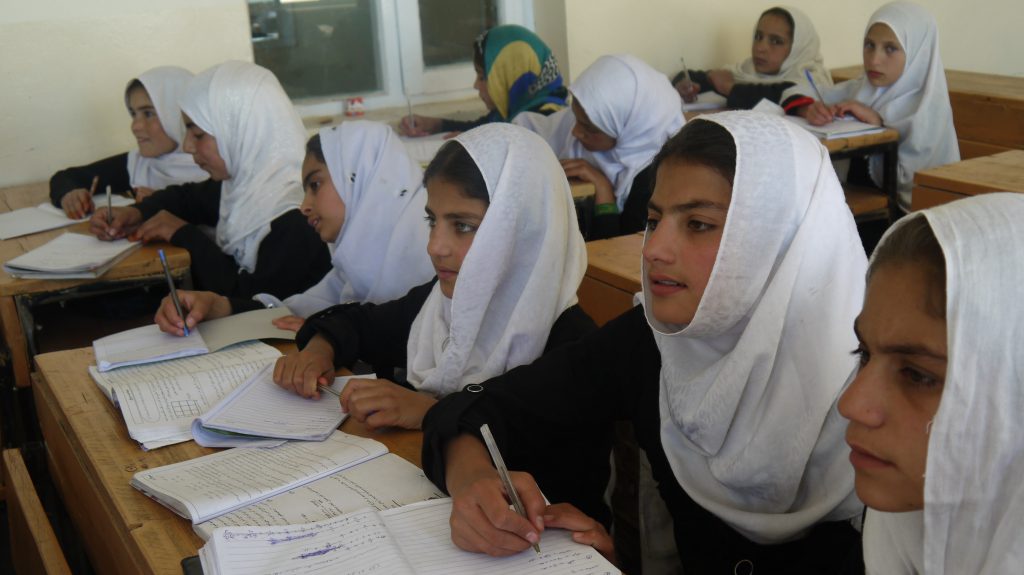Aaaaaaand another project completely financed: with your help, we raised €1,000.00 for a new girls’ school in Bojasar, Afghanistan. We were thus able to fund school education for 50 female 1st graders for an entire year! Our partner in Afghanistan, the Afghan Women’s Association, systematically supports Afghan women and children in the following areas: school education, vocational training / trades, construction of clean drinking water wells, healthcare / health education, emergency relief and family sponsorships.
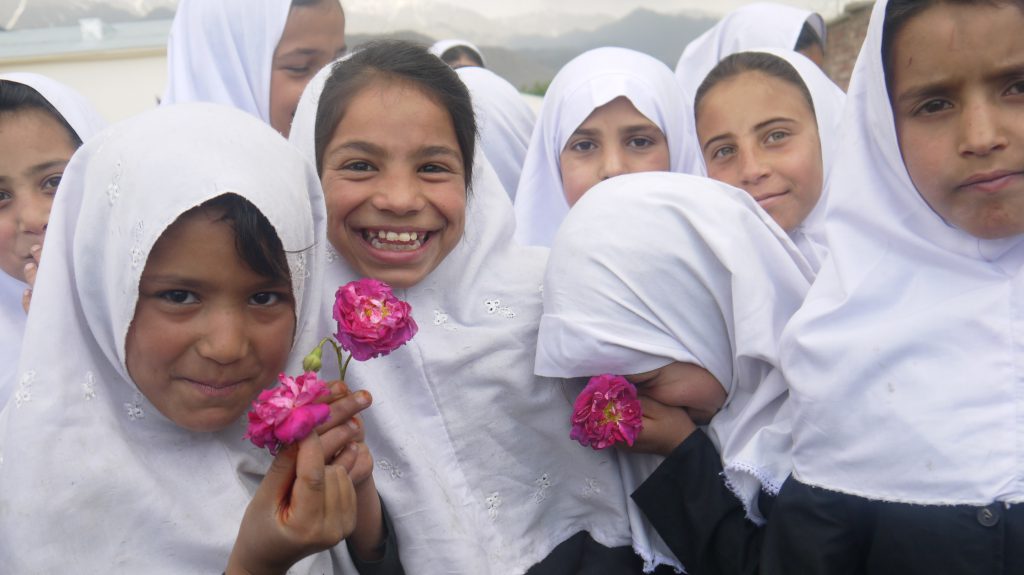
The association has been supporting projects in remote areas of North and South-eastern Afghanistan and in Afghan refugee camps close to Peshawar in Pakistan for 25 years. It permanently funds five schools for girls and boys, two training centers for seamstresses and embroiderers, two literacy projects, one maternal health center, an emergency health care center and a kindergarden. They promote and fund the construction of clean drinking water wells, support families with sponsorships, and initiate emergency relief when and where needed. Their focus is on helping people help themselves, thus intending to support the abilities of locals so they can participate in shaping their own future in Afghanistan.
The beneficiary of our shared project, the girls’ school in the village of Bojasar, was opened in 2012. The school is located at the center of the village of Bojasar, about one hour from Kabul. Poor farmers, who have hardly received any aid money so far, live in these remote rural areas. Both the girls and their families are very excited about this opportunity, as older pupils can now also read letters and the like to their parents. This way, the whole families benefits.
The school immediately started out with 300 girls, 17 classrooms and a library. The girls receive free school uniforms, pens, notebooks and textbooks.

